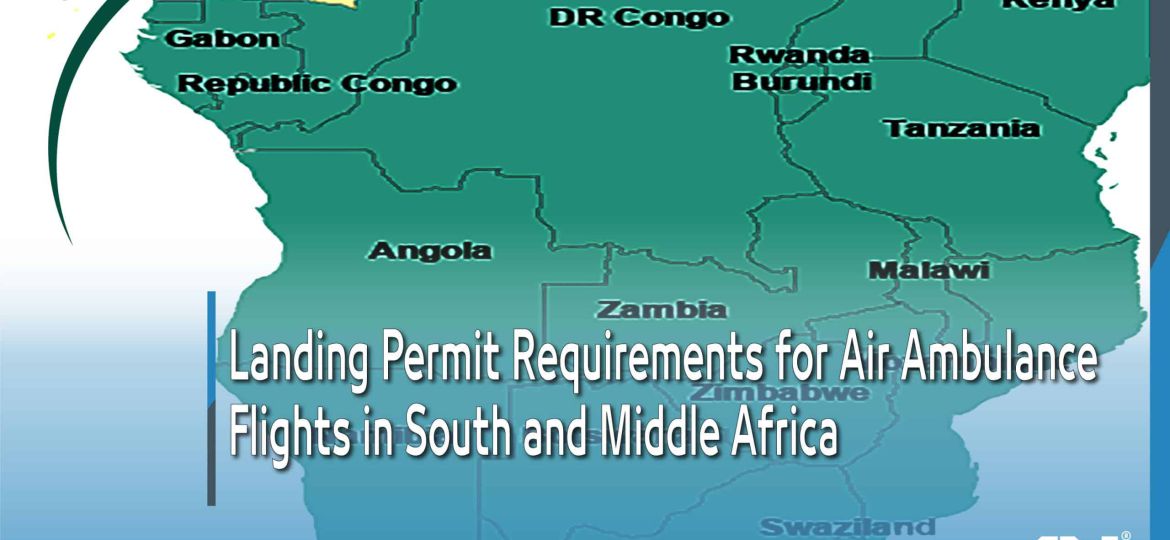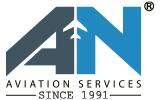
When a medical emergency strikes, every second counts, especially in air ambulance operations. Unlike regular flights, these missions are urgent, life-saving journeys that demand swift and seamless coordination across borders. One of the most critical components is securing a landing permit, a process that can either speed up patient care or delay vital treatment.
In South and Middle Africa, where geographic and regulatory complexities vary significantly, the need for rapid and efficient landing permit approvals becomes even more pressing. Understanding these permit requirements is not just a matter of compliance; it’s a matter of life and death. This blog dives into what you need to know to ensure your air ambulance missions are cleared for landing without delay.
Why Timely Landing Permits Save Lives?
In medical emergencies, minutes can mean the difference between life and death. Air ambulance flights often carry critically ill or injured patients who need immediate treatment. A delayed landing permit can slow down the entire mission, putting lives at risk. That’s why fast approvals aren’t just helpful, they’re essential.
Unlike scheduled passenger flights, air ambulance operations are urgent, unpredictable, and time-sensitive. There’s no room for red tape or long waiting periods when someone’s life hangs in the balance.
Medical Emergencies vs. Standard Flight Protocols
Standard flight operations follow fixed routes, adhere to planned schedules, and maintain standard processing times. Medical flights don’t. They require quick clearances, last-minute route adjustments, and special handling upon arrival.
However, many civil aviation authorities still apply the same rules to both types of operations. This mismatch can lead to critical delays if the specific nature of air ambulance missions isn’t communicated and prioritized during the permit process.
Challenges in Remote African Regions
Operating in remote or underdeveloped parts of South and Middle Africa adds another layer of complexity. Poor infrastructure, limited airport access, after-hours restrictions, and slow communication with aviation authorities can all cause unwanted delays.
In some regions, security concerns or a lack of medical facilities near landing sites require special coordination with local authorities and hospitals. Without a clear understanding of these regional challenges, even experienced operators can face costly delays, both in time and patient safety.
Mandatory Documents for Air Ambulance Landings
To secure a landing permit for an air ambulance flight, having the right paperwork ready is non-negotiable. These missions are urgent, but they must still comply with aviation regulations. Authorities across South and Middle Africa often request a specific set of documents to approve medical landings quickly. Here’s what you’ll typically need:
1. Valid Air Operator Certificate (AOC)
Your AOC proves that your air ambulance service is authorized to operate. It confirms compliance with international safety and operational standards and is a basic requirement for permit approval.
2. Aircraft Registration & Insurance
Every air ambulance must provide up-to-date registration and proof of insurance. This includes hull and third-party liability coverage, ensuring the aircraft is legal, safe, and protected during international operations.
3. Patient Transfer Authorization Forms
These forms confirm that the patient has been cleared for air travel. In some countries, local health authorities may request additional clearance for medical evacuations, especially in cases involving infectious diseases.
4. Hospital Acceptance Letters
Before granting a landing permit, authorities often require confirmation that a hospital at the destination is ready to receive the patient. This letter ensures a smooth transfer upon arrival and reduces risks associated with waiting for care on the ground.
5. Medical Crew Licenses
The credentials of your onboard medical team must be included with your permit request. Authorities want to ensure that trained professionals are handling the patient in transit, especially when crossing international borders.
Country-Specific Permit Rules
Landing permit procedures for air ambulance flights vary across South and Middle Africa. Each country has its own set of rules, timelines, and exceptions for emergency medical missions. Understanding these regional differences is key to avoiding delays and ensuring smooth approvals.
South Africa:
SACAA Emergency Landing Protocols
The South African Civil Aviation Authority (SACAA) allows for expedited processing in emergencies. However, operators must indicate “medical emergency” in the permit request and provide all required documentation upfront.
Required Lead Times (Standard vs. Urgent)
Standard landing permit requests can take up to 72 hours, but emergency medical flights are often approved within 6–12 hours if documents are in order. SACAA also considers after-hours approvals for urgent cases, especially with hospital support.
Namibia & Botswana:
Fee Waivers for Medical Flights
Both countries may waive standard permit fees for verified air ambulance missions. Operators must include a medical justification and hospital documentation to qualify.
Restricted Airport Considerations
Some remote airports require prior notice due to limited facilities or air traffic control availability. In certain cases, operators may need to reroute to secondary airports with better medical access or landing infrastructure.
Angola & DRC (Democratic Republic of the Congo):
Military Coordination for Conflict Zones
Landing in regions affected by unrest or restricted airspace, especially in the DRC, requires coordination with military authorities. Additional security clearance is often mandatory and can take extra time.
Special Vaccination Requirements
Yellow fever vaccination certificates are commonly required for crew and sometimes even the patient. Not presenting these may delay or deny landing clearance in both Angola and the DRC.
Zambia & Zimbabwe:
After-Hours Approval Procedures
Zambia and Zimbabwe both allow for emergency after-hours landing permits, but prior arrangements must be made with local agents or aviation authorities. Having local contacts can significantly speed up nighttime or weekend approvals.
Customs Clearance for Medical Equipment
Medical flights carrying life-saving equipment must declare items in advance. Zoll (customs) authorities may require manifests and clearance letters, especially for pharmaceuticals, oxygen tanks, or specialized gear brought in from abroad.
Expedited Approval Strategies
Speed is everything in air ambulance operations, and several proactive steps can help operators fast-track their landing permits, even in the most complex regions of South and Middle Africa:
Pre-Registered Medical Operator Programs:
Some civil aviation authorities offer fast-track processing for operators who are pre-approved or have a proven track record of safe medical flights. Joining these programs can significantly reduce lead times for urgent missions.
Diplomatic Channels for Urgent Cases:
When seconds count, working through diplomatic or embassy channels can help push permits through. Some governments prioritize air ambulance flights when routed through official diplomatic contacts, especially during natural disasters or life-threatening emergencies.
Real-Time Application Tracking:
Using systems that allow real-time tracking of your permit application helps operators stay informed and respond quickly to any missing documentation or authority requests. This reduces downtime and ensures that delays are caught and resolved early.
Common Obstacles & Solutions
Despite the urgency of medical missions, air ambulance operators still face several roadblocks when applying for landing permits in Africa. Here’s how to overcome the most common ones:
Obstacles:
- Bureaucratic Delays: Permit offices may be understaffed or slow to respond, especially during weekends or holidays.
- Last-Minute Route Changes: Weather issues, hospital changes, or patient conditions may force a reroute during the mission.
Solution:
- Local agent networks for faster processing: Partnering with experienced local agents who have direct lines to aviation authorities can speed things up dramatically. These agents know how to escalate medical cases and cut through administrative red tape.
- Pre-Approved Alternate Airports: By arranging backup landing approvals at alternate airports in advance, operators can adapt quickly without reapplying from scratch mid-flight.
How AN Aviation Services Guarantees Fast Approvals?
At AN Aviation, we understand that air ambulance flights aren’t just urgent, they’re lifesaving. That’s why we’ve built a system specifically designed to get your medical flights approved faster and more reliably across South and Middle Africa.
Dedicated Medical Flight Permit Team
Our specialized team works around the clock to process emergency landing permits, coordinate with local authorities, and resolve any issues in real time. We prioritize medical missions above all else.
Partnerships with Health Ministries
We collaborate directly with Ministries of Health and airport authorities across the region. This allows us to bypass standard delays, verify medical urgency quickly, and ensure your mission receives the highest priority.

